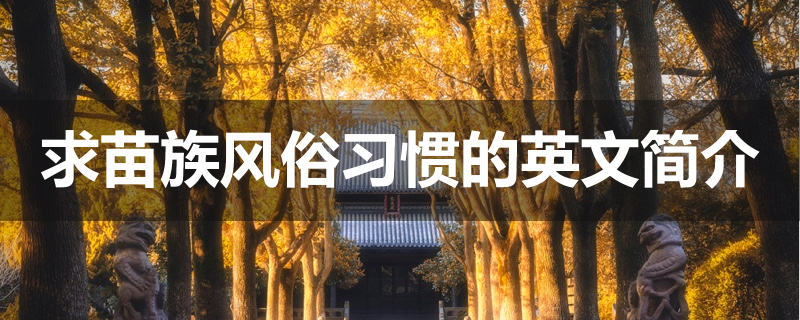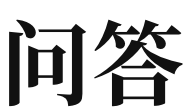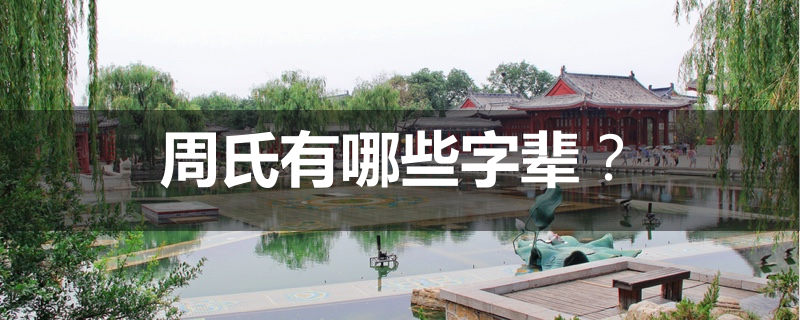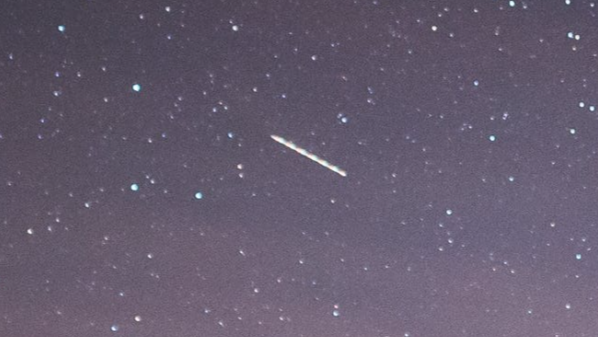苗族是我国最古老的
民族之一,人口众多,分布辽阔,湘西苗族属其中之一部。在长期的历史发展过程中,苗族在
服饰、
节庆、
婚嫁、
丧葬、娱乐、
礼节、
禁忌、饮食等方面,形成自己独特的风俗习惯。 一、服 饰 湘西苗族的
古代服饰,男女
差别很小,一律是“色彩斑澜”;上身穿
花衣,下着百褶裙,头蓄长发,包赭色花帕,脚着船形花鞋,佩以各种银饰。 清代雍正年间“改土归流”,政府指令“服饰宜分男女”之后,变化较大,甚至有很
多人全换上
汉人
服装。如今天的永顺、
龙山等县的苗族,其服饰与汉族已无分别。但在花垣、保靖、凤凰、吉首、古丈、泸溪等县境内,苗族的服饰尚有特色。 苗族男子的
衣饰较为简单;头缠布帕,身穿
对襟衣,衣袖长而小,裤简短而大,喜包青色裹脚。
头帕有青帕和花帕两种,帕长一丈以上,有多至三丈的。缠戴时多成斜十字形,大如
斗笠,衣服的颜色有花格、全青、全蓝等,其中以花格布衣最有特色。衣扣一般为七颗。有的青年男子,为
使人欣羡自己的富有和豪爽,穿衣多到七件。最外层的衣服只扣最下边的一对纽扣,第二层衣服扣下面两对纽扣……以此类推,一直到扣完最里层的七对纽扣为止。这样,层层新衣全能由外看出,别有一种情趣。 与苗族男子的简单
衣着相反,苗族
妇女的服饰十分精美复杂。 头帕:苗族妇女的头帕,
因地而异。
凤凰县境内的苗族妇女多加包短帕一珙,长三尺多,由额头包至
脑后,连耳朵都包在内面。花垣等县境内的苗族妇女喜用黑帕(父母去世者
戴白帕),折叠整齐,包得平平正正,不偏不斜,末挽一道,恰齐额眉。吉首县境内的苗族妇女头帕较杂,与凤凰县相接的
地区包花帕,与
花垣县相邻的地区包黑帕。泸溪、古丈和吉首东部地区的苗族妇女则包白色头帕。帕上绣有四对青色花蝶,朴素美观,独具风韵。所谓“头上帕子四个角,四个角上绣飞蛾”,说的就是这种白帕。 首饰:苗族妇女的首饰,造型精美,种类繁多。以制作的原材料分,有金饰、银饰、铜饰、铝饰、玉饰等,而以银饰最为普遍。从佩戴的部位分:有银帽、银盆、
凤冠、
苏山耳环、项圈、手镯、戒指、牙签、扣绊等,而以手镯和戒指必须常戴。从造型上分,仅耳环一项,就有瓜子吊耳环、石榴耳环、梅花针耳环、圈圈耳环、龙头耳环、
梅花吊瓜子耳环、耙粑耳环、龙头瓜子吊耳环等等。 衣裤及其他:苗族妇女的衣服,过腰大而长,衣袖大而短,没有衣领。袖口之大,约在一尺以上。胸前及袖口,
习惯要滚边、绣花或缕纱,并要加上栏杆花瓣于其问。有的还需在开岔和放摆前后两面的边缘
刺绣挖
云钩。衣服
式样一律是满襟,无对襟式。制作一套苗族妇女的衣裤,缝工、
绣工精致的,需工日数十。裤子较短,裤脚较大。裤筒边缘的滚边、绣花或数纱与衣服相同。礼裙长而宽,下脚
沿边
满绣
花纹,并滚栏杆及大小花瓣,五光十色,焯耀眩目。鞋子满绣花,头尖口大,后跟上耳,以便穿着。 解放后,在一些苗汉杂居地区,
苗族服饰受汉族的影响较大,一些
青年已改着汉装。 二、节庆 湘西苗族的节庆较多,活动规模大。其中最富有代表性的有: 1.赶年场。
农历
正月,湘西苗族
人民最热心的是赶年场,其日期由各地自行约定。赶年场.那天,男男女女,老老少少,身着
节日盛装,互相邀约,成群结队去赶场。年场上,
人流如潮,熙熙攘攘,异常热闹。
人们不但可以进行物资交流,还可以参加或观看
打秋千、舞狮子、
玩龙灯、
上刀梯等活动,青年男女也多利用这种机会,物色情侣,谈情说爱。
歌郎歌娘更是大显身手,三五结伴,说古道今,引吭高歌,互相唱和,或盘根,或祝贺,或叙述
传统故事,或即兴演唱
新词。唱的人愈唱兴致愈高,听的人愈听精神愈振。即使大雪纷飞,天寒地冻,年场也要如期举行。 2.
三月三。这是湘西苗族的
传统歌舞节。这一天,苗族人民自动集中到约定的
歌场上,参加对歌、听歌、跳舞、观舞,尽情欢乐。 3.
赶清明。这是湘西苗族特有的大型歌节,又称“清明歌会”。相传,因苗族多散居在偏僻的崇山峻岭之中,一切
日常用品都必须到比较远的汉区赶场交换,常常受骗上当。所以,苗族人民便相约以清明节这一天作为自己的场期,互相交换物资,同时会见
亲友。这样.久而久之,便形成了今天的“清明歌会”了。 清明歌会均有传统的中心
会场。
吉首市东部的苗族人民赶清明,其中心会场每年都在
丹青的清明场上。到时,苗族
歌手以
手托腮,引吭高歌,你唱我和,喜气洋洋。有的唱到夜幕降临仍不肯散会,一直唱到通宵达旦。 4.看
龙场。每年从农历三月谷雨那一天算起,
逢辰便是看龙El,习惯称做看头
龙后十二天又轮转到辰日,再逢看龙之日,男女老少,均休息一天,踊跃参加。若在这天干了农活,就属于犯忌。因此,苗族人民对于“看龙”的事,非常重视。Miao people in China, one of the oldest large population, the distribution of the vast, western Hunan Miao belong to one of the 1. In the long course of historical development, the Hmong in the costumes, festivals, marriage, funeral, entertainment, etiquette, taboos, diet, etc., forming its own unique customs.
First, the ancient costumes Hunan Miao costumes, little difference between men and women, all the "color Ban Lan"; on wearing a Pied Piper, the next with pleated skirts, head and long hair, bags ocher flowers Pa, feet with boat-shaped Hua Xie, wear to a variety of silver. The Qing Dynasty Yongzheng, "the Qing Dynasty flow", the Government directive, "men and women should dress", the changed greatly, and even a lot of people are all put on Chinese clothes. Like today's Yongshun, Longshan counties Miao, their clothes were no longer with the Han. However, in Huayuan, Baojing, Phoenix, Jishou, Guzhang, luxi and other County, there are characteristics of Miao costumes. Hmong man's clothing is more simple; Touchan Bouphavanh, wearing Duijin clothing,
Long sleeves and small, short pants and large, I am pleased bag blue bound feet. There are green and flowers Toupa Pago Pago are two types of long-Yi Zhang and above par, as many as thirty feet of the. When wrapped around wearing a cross over into the ramp, as big as rain hats, clothing and the color grille, all green, all blue, etc., of which the most characteristic flower cloth clothing. Generally buttoned 7. Some young men, in order to make people envy their wealth and generous dressing over the seven reports. Outermost layer of clothing is only deducted the bottom of a pair of buttons, the second layer of clothes, two pairs of button button below ... ... and so on, until the buckle end of the most inner layer of the seven pairs of buttons so far. In this way, layers of clothes Almighty be seen from the outside, do not
There is a delight. Hmong man with a simple dress the contrary, the Hmong women's costumes are very beautiful complex. Toupa: Hmong women Toupa, vary. Fenghuang County in the Miao women in more packages a short par-kung, more than three feet long, from the forehead to the back of the head package, and even the ears are included in package surface. Huayuan County, such as the Hmong women like to use a black-Pa (parents deceased person wearing a white Pa), folded neatly, packet too flat precisely, impartial ramp to pull an end, exactly the amount of Qi Mei. Jishou County of Miao women Toupa more mixed, with connecting regional package flower Fenghuang County Pa, and Huayuan County in areas adjacent to black-Pa. Lu River, the eastern region Guzhang and Jishou Miao
Women are packets of white Toupa. Pa embroidered with four pairs of blue admiral, simple beauty, unique charm. The so-called "head Pazi four corners, four corners of embroidered moths" that is such a white-Pa. Jewelry: Hmong women's jewelry, fine shape and variety. Of raw materials to produce points, there are gold, silver, copper ornaments, aluminum ornaments, jade jewelry and substituting silver is most common. From the worn parts of sub-: There are silver cap, Yin Pen, phoenix coronet, Su Shan earrings, necklace, bracelets, rings, toothpick, button trip, etc.
And in order to wear bracelets and rings to be regular. From the shape on the points, only one earring, there are seeds hanging earrings, garnet earrings, plum blossom needle earrings, circle earrings, leading earrings, plum seeds hanging earrings, rake DCB earrings, leading seeds hanging earrings and so on. Underwear and others: Hmong women's clothes, too large waist long, large and short sleeves, no collar. Cuff so great about a foot or more. Chest and sleeves, it is customary to the sewing machine, embroidery yarn or strand, and would like to add the railings on its petals asked. Some need to put in open fork and put the edge of embroidery around the sides dug cloud hook. Clothing styles are invariably full breasted, no Duijin style. The production of a Hmong women's underwear, sewing work
, Exquisite embroidery work is required tens of man-days. Short pants, trousers larger. Kutong the edge of the sewing machine, embroidery, or the same as the number of yarn and clothing. Li long skirt wide, offal over embroidered pattern along the border, and roll bars and the size of petals, colorful, Cheuk Yiu blinding. Shoes full of embroidery, head and sharp mouth, the latter to keep up with our ears, in order to wear. After the liberation, in some mixed areas Miao Han, Miao costumes influenced by the Han people, some young people have changed the Han loaded.
Second, more festive western Hunan Miao festival, activities, a large scale. One of the most highly represented are: 1. Driving out the Year field. The first lunar month, western Hunan Miao people are most enthusiastic about is driving out the Year field, a date agreed upon from all over themselves. Driving out the Year field. On that day, men and women, young and old, dressed in festive costumes, mutual invitations in droves to ganchang. Years of field, the flow waves, bustling, extremely heated. It can not only exchange of goods and materials, but also can take part in or watch a swing, dancing lions, playing the dragon, the Daoti and other activities were also many young men and women take advantage of this opportunity to find lovers, romance. Lang Song Song's mother is even more flourish, 35 together,
Said the trail today and sang along with each other joined in the chorus, or packing, or congratulations, or a traditional narrative story, or an impromptu singing new words. The more people who sing to sing the higher spirits, listening to people who listen to the spirit of the more more vibration. Even if the snow, cold, annual field should be held as scheduled. 2. March 3. This is a western Hunan Miao's traditional song and dance festival. On this day, the Miao people's songs automatically centralized court agreed to participate in singing in antiphonal style, songs, dancing, watching the dance, play fun. 3. Catch Qingming. This is a unique large-scale western Hunan Miao Song Festival, also known as "Ching Ming song will be." According to legend, because many Hmong scattered in the remote mountains, and all daily necessities have to be to the more distant areas of the Han
Ganchang exchange, are often fooled. Therefore, the Miao people can Meet with the Ching Ming Festival this day as their field period, the exchange of goods, while meeting with friends and relatives. Way. Over time, these will become today's "clear and bright song will be" the. Qingming song will have a traditional center of the venue. Jishou drive east of the Miao people, clear and bright, its central hall of the Ching Ming Festival every year in beautiful field. By then, Miao singer Tuosai hand, sang along, you sing to me and ahead. Some sing nightfall refused to closing, has been sung through the night. 4. Look at Long Field. Each year from the day of Lunar New Year in March Guyu
The date, Feng-Chen is to see Long El, used after the 12 days called the spectacle of Long-chen day to rotate again, and then look at the Dragon every day, young and old, have a rest day, to take part. If, in this Heavenly Stems of the farm, they are taboo. Therefore, the Miao people, to "see dragon" thing very seriously.
求苗族风俗习惯的英文简介
2021-07-15

1

452

提交答案
1个回答





 回答
回答










